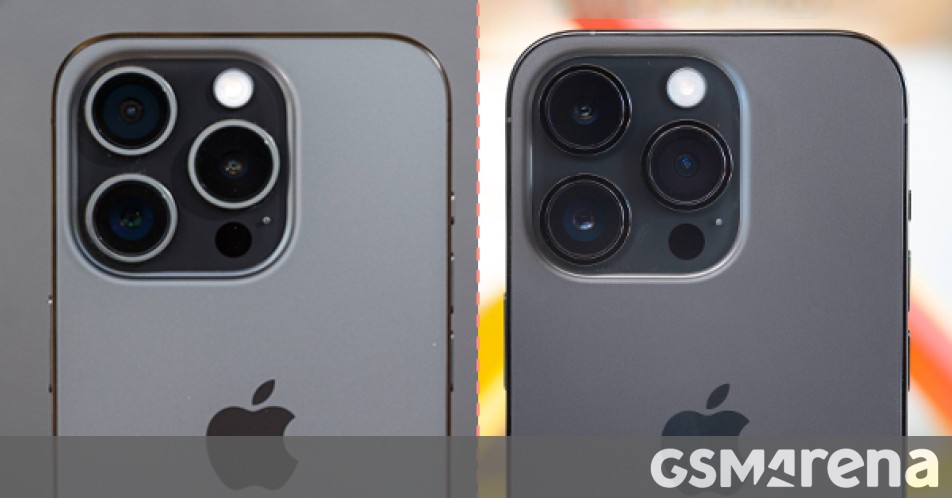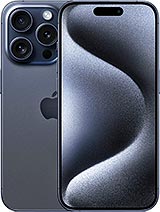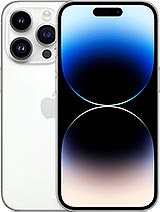
The 2023 generation of iPhone Pros comes with some meaningful changes – like the move to the USB-C port and the revamped build, but these might not be all that important to everyone. Say you have a ton of Lightning accessories, or prefer the feel of stainless steel on your fingertips – perhaps an iPhone 14 Pro might be a better option for you than the latest 15 Pro.
Now, Apple may not be willing to sell you a 14 Pro anymore – the old high-end models have been discontinued on the official website – but third-party retailers appear to have plenty of stock. So, we’ll do a little comparison to try and help you if you’re in this dilemma.
For starters, you can compare the complete specs sheets here or directly continue with our editor’s assessment below.
Size comparison
Thanks to slightly thinner bezels, the new iPhone 15 Pro is a smidge shorter and narrower than last year’s model. What’s more important, we think, is the lower weight – by a tangible 19g, thanks to the switch from stainless steel to a titanium/aluminum build. The new rounder edges of the frame also make the new model feel much lighter and more compact than the 14 Pro.
Other than that, there’s only a little that’s changed in the styling. Both generations offer flat frames and flat glass panels on each side, with a notably huge camera housing on the back. The titanium models have somewhat more muted colorways, while the 14 Pro can be bought in purple, silver, gold or black.
The iPhones are marketed for their Ceramic Shield -branded glass atop the display, which was developed together with Corning. Both devices have that along with identical Gorilla Glass panels on the back.
Both phones are IP68-rated for dust and water resistance, rated to survive at 6m depth.
Initial reports suggested that the new generation phones were more prone to breaking than the 2022 ones, but that appears to have been refuted since.
Display comparison
There isn’t much to separate the iPhone 15 Pro’s display from the one on the iPhone 14 Pro – they appear to be identical. That’s no bad thing since the 14 Pro already had one of the best displays in the industry; it’s just that there’s little reason to pick one over the other in this respect.
Both panels are capable of just under 1,800nits with Auto brightness enabled, while the slider will get you to the mid-800s – superb results.
Both screens offer excellent color calibration.
Both iPhones offer supposedly impressive adaptive refresh rates, but since Apple is not transparent in its implementation, we are left to rely only on the advertised numbers.
Finally, the iPhones supports both HDR10+ and Dolby Vision streaming.
Battery life
The iPhone 15 Pro is equipped with a battery rated at 3274mAh. The 74mAh difference compared to the 14 Pro’s capacity is hardly an upgrade – probably that’s just what the engineers were able to squeeze in the available space this time around.
With that in mind, it’s hardly a surprise that the iPhone 15 Pro has essentially the same battery life as the previous generation, though you could possibly see a small improvement in video playback.
Charging speed
We clocked a full charge from flat to take 1:33h on the iPhone 15 Pro, a minor improvement over the previous generation, though hardly speedy in the grand scheme of things. Once again, there’s no reason to get the new model for this particular aspect of its performance.
Both phones support wireless charging up to 7.5W with Qi-compliant charging pads, or up to 15W with the proprietary MagSafe accessory.
Speaker test
The iPhone 15 Pro returned much the same result for loudness in our speaker test as the 14 Pro, placing it in the ‘Good’ category.
Quality is excellent as usual, though the sound profile has changed somewhat noticeably compared to the previous generation. The 15 Pro has gained some extra thump in the low end from the already pretty boomy 14 Pro, but also maintains the likeable rendition of vocals and the crispy treble. We wouldn’t really call it a reason to get the new one over the old one, though – both are great.
You can compare how the two iPhones sound in controlled acoustic conditions with the samples below. Just make sure you have your headphones on and the volume is at max level.
Performance
The iPhone 15 Pro has the best chip Apple has made so far – the A17 Pro. On the 14 Pro you’ll have to settle for their second-best – the A16 Bionic. Both feature custom 6-core CPUs and custom GPUs, with the new one having 6 cores, while the one inside A16 – 5 cores.
Apple claims the CPU high-speed cores are 10% faster than those in the A16 Bionic. The new GPU should also be 20% faster than its predecessor in peak performance. The GPU also enables hardware-accelerated Ray Tracing, which is supposedly 4 times faster than the software-based Ray Tracing on A16 Bionic.
The iPhones feature top-notch hardware and can run smoothly pretty much everything you find on the App Store. The CPU and GPU performance jumps are indeed as Apple has promised, but outside of benchmarks, we doubt the difference will be felt – not today, and not in the near future. So it goes like this – if you want the latest and gratest chip, get the 15 Pro, but know that the 14 Pro will be just as good for most applications.
Camera comparison
The iPhone 15 Pro has more or less the same camera hardware as the 14 Pro – three rear cameras and the selfie camera are further assisted by a LiDAR system on the back and a 3D ToF camera on the front.
The main cameras on each phone are 48MP, while all the others stand at 12MP. The 15 Pro doesn’t get the 15 Pro Max’s 5x telephoto, so both the 15 Pro and the 14 Pro offer 3x zoom – nothing to separate the two generations in terms of reach then.
The main camera on the 15 Pro is better than the 14 Pro’s in several ways, though. For one, it can shoot in 24MP, offering better detail and a less processed, more natural look. If set at 12MP, though, the photos are completely identical on both generations.
The 2x zoom and the ultrawide photos are of similar quality across both iPhones, and so too are the ones captured with telephotos.




iPhone 15 Pro daylight camera samples: 0.5x • 1x • 2x • 3x




iPhone 14 Pro (Max) daylight camera samples: 0.5x • 1x • 2x • 3x
The same can be said about the low-light photos – the 24MP output from the 15 Pro’s main camera is more detailed, though you won’t be getting that when Night mode kicks in. Then again, it’s not too keen to kick in in the first place, so you will be reaping the benefits of those extra megapixels relatively often. Minor differences can be seen in the other cameras’ output here or there, but they’re more of a shot-to-shot variation than a significant enough advantage of one or the other.




iPhone 15 Pro low-light camera samples: 0.5x • 1x • 2x • 3x




iPhone 14 Pro (Max) low-light camera samples: 0.5x • 1x • 2x • 3x
Overall, both generations of iPhone Pros are great cameraphones. Still, the new model’s added features do make it that extra bit more versatile, and are potentially worth the premium.
Here’s a glimpse of how the iPhone 15 Pro’s main camera compares in image quality to the iPhone 14 Pro’s in our Photo compare tool.
And here’s how the iPhone 15 Pro’s main camera compares in video quality to the iPhone 14 Pro’s in our Video compare tool.
Verdict
The iPhone 14 Pro could save you upwards of €150 compared to a 15 Pro, which doesn’t sound like a massive difference next to the 15 Pro’s €1200 price tag. It’s still a difference, though; the old model may have some strong points for the right buyer.
Key among those is, believe it or not, the Lightning port. If you’re in a multi-iPhone household, making the switch to USB-C on one of the units may very well be more of a hassle than an upgrade, so you could be inclined to postpone the move until a later stage.
We can also see why some folks would prefer the stainless steel build of the iPhone 14 Pro over the new titanium-clad iPhone 15 Pro.
Still, we reckon the new model has more going for it if you’re choosing between these two in particular. The USB-C port is the way to go, and the switch has to happen at one point or another – you might as well be an ‘early adopter’ (the irony isn’t lost on us).
The camera improvements aren’t huge, but they’re there, and the 24MP capture and intermediate focal lengths sound like worthy upgrades. The latest chip is always nice to have too.
Perhaps most important, however, is the weight reduction – we think that opens up the iPhone 15 Pro to a new crowd of potential buyers, who have been looking for a decently pocketable high-end device, but have found the iPhone 14 Pro too heavy to fit that bill.
- The nicer hand-feel due to the lighter body and rounded corners.
- The higher-res 24MP photos.
- The faster A17 Pro chipset.
- The universal USB-C port with USB 3.2 transfer speeds and enhanced connectivity options.
Get the Apple iPhone 15 Pro for:







